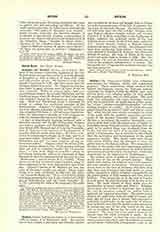

Guigues du Chastel (GUIGO DE CASTRO), fifth prior of the Grande Chartreuse, legislator of the Carthusian Order and ascetical writer, b. at Saint-Romain in Dauphine in 1083 or 1084; d. July 27, 1137 (1136 and 1138 are also given). He became a monk of the Grande Chartreuse in 1107, and three years later his brethren elected him prior. To Guigues the Carthusian Order in great measure owes its fame, if not its very existence. When he became prior, only two charterhouses existed, the Grande Chartreuse and the Calabrian house where St. Bruno had died; nine more were founded during his twenty-seven years’ prior-ship. These new foundations made it necessary to reduce to writing the traditional customs of the mother-house. Guigues’s “Consuetudines” (see Carthusian Order), composed in 1127 or 1128, have always remained the basis of all Carthusian legislation. After the disastrous avalanche of 1132, Guigues rebuilt the Grande Chartreuse on the present site.
A man of considerable learning, endowed with a tenacious memory and the gift of eloquence, Guigues was a great organizer and disciplinarian. He was a close friend of St. Bernard and of Peter the Venerable, both of whom have left accounts of the impression of sanctity which he made upon them. His name is inserted in certain martyrologies on July 27, and he is sometimes called “Venerable” or “Blessed“, but the Bollandists can find “no trace whatever of any ecclesiastical cultus”. Guigues edited the letters of St. Jerome, but his edition is lost. Of his genuine writings there are still in existence, besides the “Consuetudines,” a “Life of St. Hugh of Grenoble“, whom he had known intimately, written by command of Pope Innocent II after the canonization of the saint in 1134; “Meditations”, and six letters (P.L., CLIII). These letters are all that remain of a great number, many of them addressed to the most distinguished men of the day. Guigues’s letters to St. Bernard are lost, but some of the saint’s replies are extant. Other works which have been attributed to him are: the letter “Ad Fratres de Monte Dei” (P.L., CLXXXIV), which is perhaps genuinely his, but is also attributed to William of Saint-Thierry, and the “Scala Paradisi” (P.L., XL), probably the work of his namesake, the ninth prior.
RAYMUND WEBSTER

